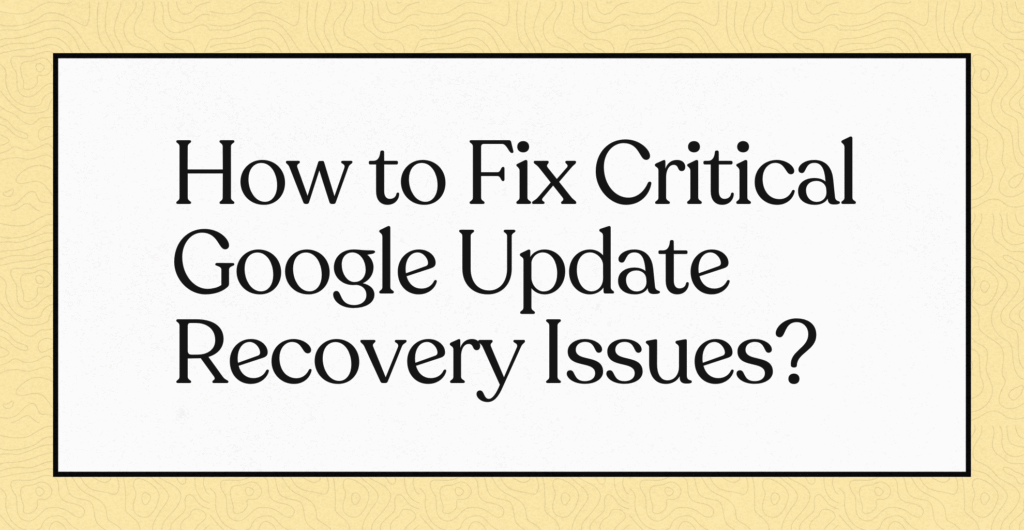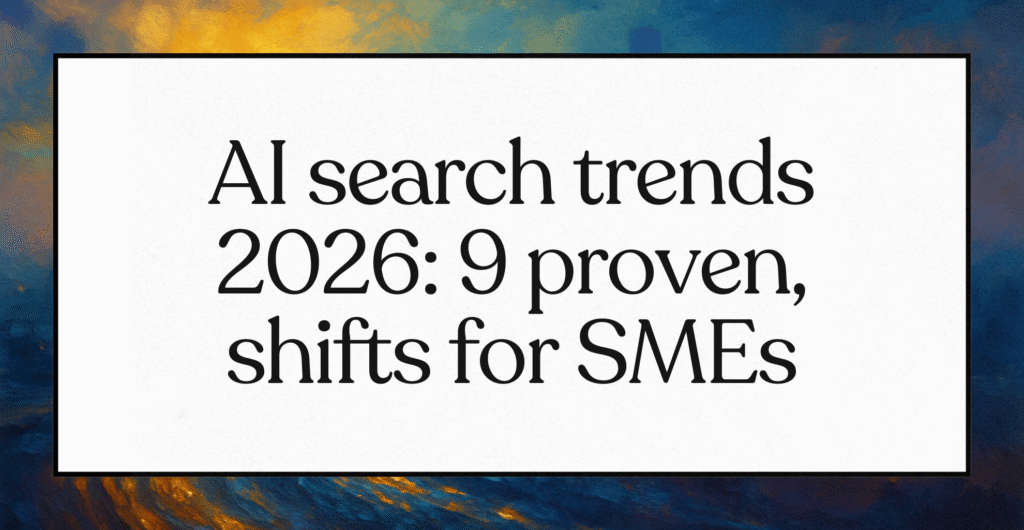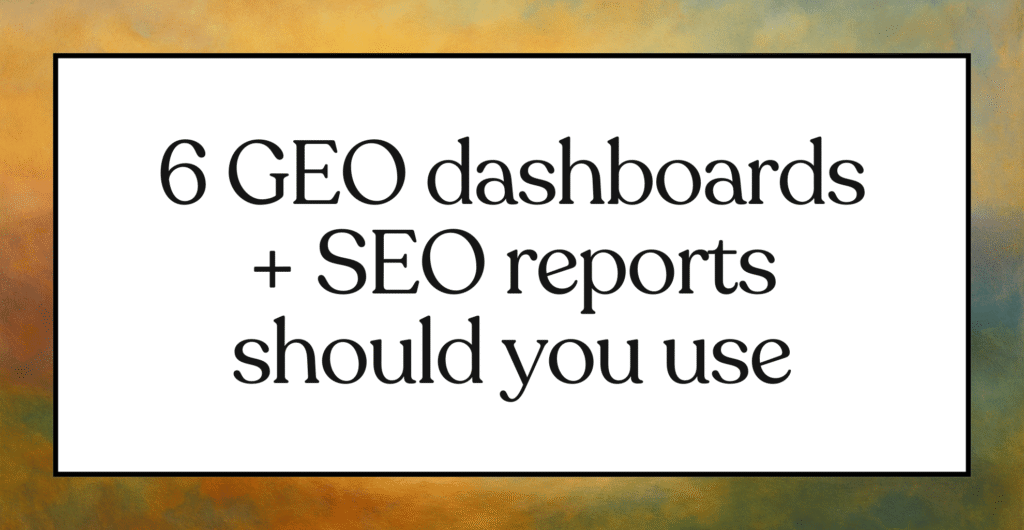Summary
Google update recovery in October 2025 centers on stabilizing crawlability, indexation, internal linking, and structured data to counter volatility from AI Overviews expansion, the June 2025 core update, and the August 2025 spam update. The guide prioritizes fast, high-impact fixes including schema validation, title and meta description optimization, Core Web Vitals improvements focused on INP, LCP, and CLS, and sitemap hygiene to restore search visibility. It adds platform playbooks for WordPress and Shopify plus African SME context to improve eligibility for rich results and AI Overviews while building long-term resilience.
Rankings often dip sharply during major rollouts and adjacent shifts such as AI Overviews expansion, spam updates, and documentation changes, which is why stabilizing quickly with a structured Google update recovery plan is critical. Many are calling the volatility “October turbulence,” yet there is no official confirmation of a unique core update: no verifiable source exists as of 2025-09-27. What is publicly documented and useful are Google’s standing core update guidelines, the June 2025 core update notes, the August 2025 spam update, and the widely expanded AI Overviews, all of which explain much of the search visibility disruption and the areas where recovery work should focus.
For African SMEs and agencies, Google update recovery requires sensitivity to local realities like bandwidth, infrastructure costs, and merchant operations. This guide emphasizes practical fixes that deliver impact fast: targeted technical cleanups, pragmatic content and schema enhancements, and platform-specific workflows for WordPress and Shopify that minimize engineering demands while aligning with signals Google measures. The 7 steps outlined here are prioritized to restore crawlability, indexation, and search clarity first, then to strengthen experience and improve eligibility for richer SERP features, including AI Overviews where relevant. Each measure reflects a clear Google update recovery trajectory, ensuring not only stabilization but long-term resilience in the face of ongoing algorithm turbulence.
By focusing on achievable technical wins and structured improvements, businesses can approach Google update recovery as a process of rebuilding visibility while positioning for the next wave of changes Google is certain to release.
Fix 1: Immediate Technical Checks for Google Update Recovery
The first stage of Google update recovery is stabilizing crawlability, indexation, and clarity signals so Google can fetch, interpret, and rank updated pages without delay. Confirm that all key links are crawlable, avoid blocked resources, and ensure critical navigation uses plain HTML <a href> anchors rather than scripted handlers that hide URLs from crawlers. Validate robots.txt directives, canonical tags, hreflang setups, and redirect chains to eliminate conflicting signals that might suppress the intended URL during Google’s quality reevaluations.
Make sure primary links are real anchor elements instead of onclick events, allowing PageRank to flow properly and ensuring discovery of content. Remove any noindex tags from pages that should rank, and confirm that disallow rules aren’t blocking CSS or JavaScript required for rendering. After large-scale adjustments, re-submit XML sitemaps and keep lastmod dates accurate so Google prioritizes recrawl.
If rankings have dropped on alternate versions, check canonical consistency across desktop, mobile, and language variants. For African SMEs especially, budget themes and plugins often introduce layered redirects or conflicting canonical logic. Auditing and correcting these early in the Google update recovery process prevents compounding visibility loss from index bloat or URL duplication.
Fix 2: Update and validate structured data
Align schema markup with current Search documentation and feature availability, removing deprecated properties and validating entities so Google can confidently extract meaning and eligibility for SERP features. Check the latest documentation updates feed and page-specific guidelines, then test key templates to ensure they parse without warnings that would reduce trust in the data.
- Prioritize Organization, Product, Article, FAQ, Breadcrumb, and LocalBusiness where appropriate, mapping each to real, visible page content.
- Keep entity names, URLs, sameAs, and brand attributes consistent across site and profiles to reduce ambiguity for rankings and AI experiences.
- Remove markup for features that are no longer supported and avoid auto-generating FAQ/HowTo at scale when content isn’t truly helpful.
- Reevaluate markup on commercial pages to match current guidelines for structured data that may influence rich results and clarity of offers.
Because Search documentation has been actively updated in 2025, schedule quarterly schema reviews and re-validations across priority templates rather than set-and-forget.
Fix 3: Metadata optimizations to lift CTR fast
When ranking positions wobble, sharper titles and descriptions can protect clicks and speed traffic recovery, especially where SERP features crowd above-the-fold space. Follow Google’s title link documentation to reduce overwrites and reflect the dominant on-page heading, brand, and query intent succinctly.
- Keep titles concise, match the main heading, avoid boilerplate repetition, and place the primary value proposition early
- Write meta descriptions that directly answer the query or summarize key benefits and proof points to attract clicks amid overlapping SERP features
- Track queries where AI Overviews frequently appear and strengthen snippet appeal with precise phrasing, fresh facts, and unique angles
- For pages recovering from dips, test title variants that echo the query’s wording pattern and user task outcomes
This is especially useful for African SMEs in competitive categories where ad units, shopping modules, and AI Overviews compress organic real estate and penalize generic phrasing.
Fix 4: Internal linking, sitemaps, and indexing fixes
A clarified internal link model is central to Google update recovery, since it restores topical authority signals and accelerates recrawl to the correct URLs after structural edits or bulk changes. Use descriptive anchor text to connect hubs, subtopics, and commercial pages, making sure every critical URL is reachable within three clicks and listed in both HTML and XML sitemaps.
Replace orphan pages and low-traffic duplicates by consolidating them into canonical hubs reinforced with contextual internal links. Keep pagination crawlable with standard anchors, and avoid infinite-scroll implementations that hide detail pages from crawlers. Re-submit XML sitemaps after consolidations, confirming each URL returns a 200 response, is canonical to itself, and includes accurate lastmod data.
During Google update recovery, use category-level links to elevate priority SKUs or cornerstone guides so Google re-weights their importance quickly. This also counteracts volatility from the August 2025 spam update by reducing thin sections and clarifying which URLs should concentrate signals and maintain ranking strength.
Fix 5: Core Web Vitals and INP priorities
Experience signals remain a pragmatic lever in any Google Update Recovery strategy, and Interaction to Next Paint as a responsiveness metric often reveals slow interactions on theme-heavy builds. Triage INP outliers, Largest Contentful Paint assets, and layout shifts on the worst templates first, then verify progress through the Core Web Vitals report in Search Console to track Google Update Recovery gains.
Target INP under 200 ms by trimming long tasks, deferring non-critical scripts, and reducing interaction handlers attached to large DOMs. Improve LCP by optimizing hero images with modern formats and preloading the largest element’s resource when stable, a step that reinforces Google Update Recovery by enhancing speed signals. Eliminate CLS by defining media dimensions in markup and avoiding late-loading banners that shift layouts, which strengthens Google Update Recovery outcomes by stabilizing page experience.
Validate field data improvements in Search Console, prioritizing mobile where commerce and local discovery dominate. For African SMEs contending with costly bandwidth, these optimizations reduce data transfer while improving perceived speed on mid-tier devices. That combination directly supports Google Update Recovery by reinforcing quality and user satisfaction signals, ensuring visibility gains are sustainable. By layering these page experience improvements into broader Google Update Recovery planning, sites can stabilize rankings faster and withstand the volatility triggered by algorithmic shifts.
Fix 6: Optimize for AI Overviews and GEO
AI Overviews have expanded to 200+ countries and are changing how clicks flow, so pages that provide concise, source-backed answers with clear scannability tend to be surfaced more often. Structure content in Q&A blocks, include precise steps and criteria, and cite high-quality sources so systems can extract useful snippets and attribute them clearly.
- Use question-led subheads, bulleted steps, short summaries, and supporting citations to align with answer-focused extraction
- Provide fresh stats and dates to stay competitive where synthesis favors current and authoritative sources
- Add entity clarity via schema and consistent naming so brand and product mentions are unambiguous in AI experiences
- Monitor traffic for queries with AI Overviews prevalence and tune content to fill clear gaps in steps, definitions, or comparisons.
Generative Engine Optimization here means designing pages that are easy to quote accurately and confidently, which complements traditional ranking systems without chasing tricks.
Fix 7: Platform playbooks and local SEO
WordPress and Shopify sites dominate SME stacks, so template-level improvements and plugin discipline can accelerate Google update recovery with minimal custom code. On WordPress, audit theme scripts, defer non-critical plugins, and validate internal links and headings in the editor; on Shopify, curb app bloat, compress storefront scripts, and consolidate duplicate collections and tags.
- Keep primary content in HTML, not hidden behind JS-only renders, so crawlers see what users see on first load
- Standardize H1/H2 patterns to align with title link guidance and reduce Google rewrites
- Use platform-native image CDNs and lazy-load below-the-fold assets to improve LCP and INP on mid-tier devices
- For African local SEO, maintain consistent NAP on site and profiles, add localized content and entities, and mark up address/geo in schema for clarity
Local clarity and template discipline together reduce ambiguity, improve experience, and make sites easier for ranking systems and AI experiences to trust and present.
Recommendations
Effective October 2025 Google update recovery depends on tightening fundamentals before layering on enhancements. Confirm crawlability and indexation first by fixing robots directives, canonical tags, hreflang alignment, and internal link consistency, then re-submit sitemaps with only clean 200-status URLs and canonical alignment.
Refresh schema across key templates, validate against the latest documentation, and remove deprecated or misleading markup. Rewrite titles and meta descriptions following current title link best practices, adding unique, up-to-date proof points to boost click-through rates where SERP features compress visibility.
Consolidate thin or duplicate pages into authoritative hubs with descriptive anchor text that concentrates ranking signals. Triage Core Web Vitals by addressing Interaction to Next Paint, Largest Contentful Paint, and Cumulative Layout Shift (CLS) on the weakest templates first, then confirm improvements in Search Console.
Structure content to align with AI Overviews by using Q&A blocks, step formats, and clear citations, while ensuring entities are reinforced with schema and consistent naming. Apply platform-specific quick wins for WordPress and Shopify, and layer localized signals for African SME markets to strengthen contextual relevance. Each measure forms part of a structured Google update recovery roadmap that balances fast technical gains with longer-term stability.
Final note
Effective Google update recovery begins with removing technical blockers, then demonstrating relevance and quality through structured data, sharper snippets, user experience upgrades, and answer-ready content designed for systems to quote. For African SMEs and agencies, the priority is low-cost, high-yield actions that restore visibility quickly, followed by scheduled refactors over a 4–12 week cycle with Search Console data confirming progress. A structured Google update recovery plan should include a Q&A workflow and tiered support so teams can execute efficiently across WordPress and Shopify setups while staying within SME budgets and agency constraints.
Start with the 7 recommended fixes, then apply a focused 30-day test on the top 20 URLs to measure gains and validate impact before scaling. By approaching Google update recovery as both a rapid-response effort and a staged optimization process, organizations can stabilize rankings, protect resources, and build resilience for the next algorithmic wave.
Sources
- Google Search’s Core Updates, Google Search Central, 2025-08-21 – https://developers.google.com/search/docs/appearance/core-updates
- What’s new on Google Search Central, Google, 2025-09-22 – https://developers.google.com/search/news
- Google June 2025 core update rollout is now complete, Search Engine Land, 2025-07-16 – https://searchengineland.com/google-june-2025-core-update-rollout-is-now-complete-458617
- Google August 2025 spam update done rolling out, Search Engine Land, 2025-09-24 – https://searchengineland.com/google-august-2025-spam-update-done-rolling-out-461560
- AI Overviews expand to over 200 countries and territories, Google, 2025-05-19 – https://blog.google/products/search/ai-overview-expansion-may-2025-update/
- AI in Search: Going beyond information to intelligence, Google, 2025-05-19 – https://blog.google/products/search/google-search-ai-mode-update/
- Semrush Report: AI Overviews’ Impact on Search in 2025, Semrush, 2025-07-21 – https://www.semrush.com/blog/semrush-ai-overviews-study/
- Google Algorithm Updates & Changes: A Complete History, Search Engine Journal, 2025-09-21 – https://www.searchenginejournal.com/google-algorithm-history/
- Influencing your title links in search results, Google Search Central, 2025-05-08 – https://developers.google.com/search/docs/appearance/title-link
- SEO Link Best Practices for Google, Google Search Central, 2025-02-03 – https://developers.google.com/search/docs/crawling-indexing/links-crawlable
- Latest Google Search Documentation Updates, Google, 2025-09-23 – https://developers.google.com/search/updates
- Core Web Vitals report – Search Console Help, Google, 2025-08-02 – https://support.google.com/webmasters/answer/9205520
Q&A
Q1: What is a Google update recovery plan for AI Overviews, core updates, and spam updates
A1: A structured sequence that fixes crawlability, indexation, schema, and internal links, then tunes content for AI Overviews and rich results.
Q2: How should African SMEs recover rankings after the August 2025 spam update
A2: Consolidate thin pages into authoritative hubs, reinforce internal linking, validate schema, and improve Core Web Vitals on mobile.
Q3: Which technical checks speed up Google update recovery on WordPress and Shopify
A3: Use real anchor links, clean robots and canonicals, re-submit XML sitemaps with accurate lastmod, trim apps or plugins, and keep primary content in HTML.
Q4: How do Core Web Vitals influence search visibility during volatility
A4: Lower INP under 200 ms, optimize LCP assets, and prevent CLS to improve user signals that support faster recrawl and stable rankings.










